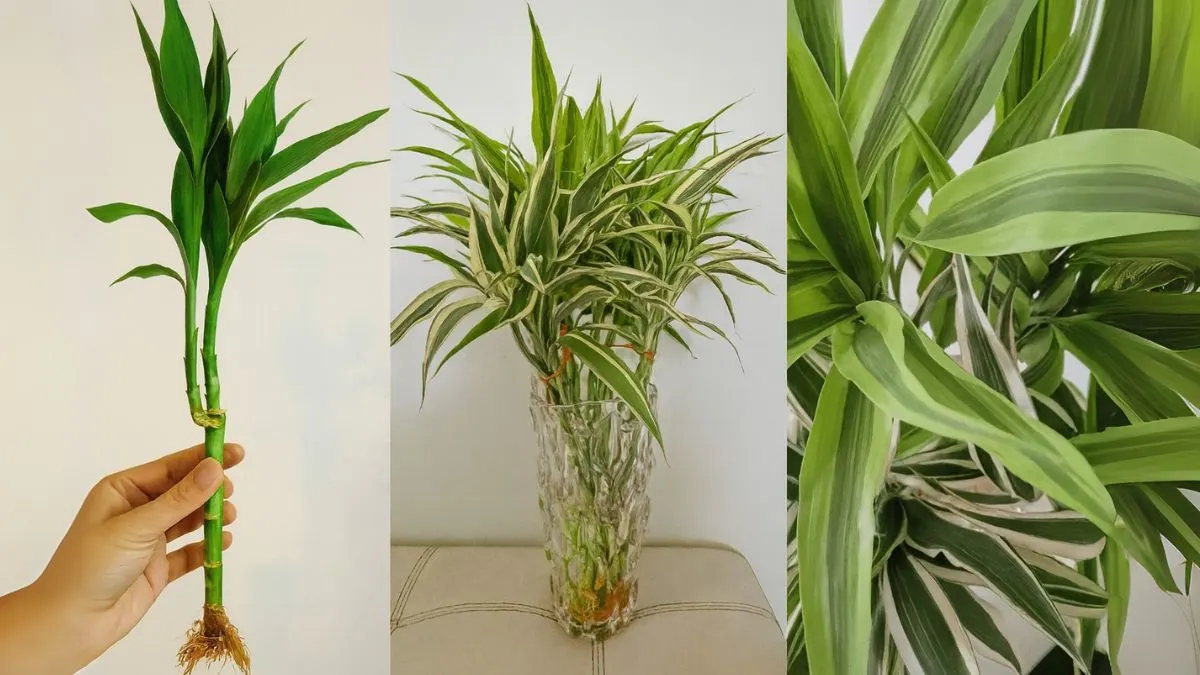The lucky bamboo plant isn’t just an ornamental addition to your home—it’s also considered a symbol of good fortune, positivity, and prosperity in many cultures. Popular across Canada, the USA, and worldwide, lucky bamboo is often given as a gift during special occasions. But here’s the catch: while it looks simple to grow, this plant requires the right balance of care. Neglecting its basic needs like using filtered water, providing indirect sunlight, and choosing a suitable container can lead to yellowing leaves and stunted growth.
This guide will help you understand the essential lucky bamboo care tips so your plant stays lush, vibrant, and thriving year-round.
1. Choosing the Right Environment

Light Conditions
Lucky bamboo plants thrive in indirect light, clean water, moderate humidity, and occasional feeding. Too much direct sun can scorch the leaves, while too little light can slow growth. Since bamboo plants do best in slightly shady areas or indirect sunlight, placing them near a window with filtered light is ideal.
👉 Personal tip: I keep my lucky bamboo on my office desk near a north-facing window—it gets enough light without the harsh afternoon sun.
2. Watering the Right Way
Proper watering is one of the most critical aspects of caring for lucky bamboo. Always maintain stable water levels—about an inch or two above the roots if it’s growing in water. If your plant is in soil, water just enough to keep the soil moist but not soggy.
- Always use filtered water or rainwater, as tap water may contain chlorine and fluoride that damage roots.
- Refresh the water every two weeks to prevent bacterial growth.
- For soil-based lucky bamboo, make sure the pot has good drainage.
Also Read: Acacia Catechu: The Powerful Tree Behind Kattha, Cures & Color
3. Feeding Your Lucky Bamboo
Like all living plants, bamboo needs nutrients to thrive. Regular feeding keeps lucky bamboo lush and vibrant.
- Use a liquid houseplant fertilizer diluted to one-tenth of its strength.
- Feed sparingly—too much fertilizer can burn the roots.
- For best results, provide occasional misting and feeding with diluted fertiliser every 6-8 weeks.
4. Containers Matter
Choosing a suitable container is another key aspect of care. Lucky bamboo can grow both in water-filled vases or soil-filled pots.
- For water-grown plants: Pick a glass vase with pebbles to support the stems.
- For soil-grown plants: Ensure the pot has drainage holes and a well-draining soil mix.
A simple upgrade to the right container can boost growth and prevent root rot.
5. Humidity and Temperature
Lucky bamboo thrives in warm, humid conditions, mimicking its native tropical environment. Occasional misting helps maintain the right moisture level, especially in air-conditioned homes.
- Ideal temperature: 65–90°F (18–32°C).
- Avoid placing your plant near heating vents or air conditioners.
Also Read: The Secret to Lush Morpankhi Ferns Indoors
6. Common Problems and Solutions
Problem |
Cause |
Solution |
Yellowing leaves |
Too much sun or tap water chemicals |
Move to indirect light, switch to filtered water |
Stunted growth |
Lack of nutrients |
Provide diluted fertilizer every 6–8 weeks |
Mushy roots |
Overwatering or poor drainage |
Repot in soil with better drainage |
Dry leaf tips |
Low humidity |
Mist occasionally to restore balance |
7. Lucky Bamboo and Feng Shui
Apart from its beauty, lucky bamboo holds cultural significance. According to Feng Shui, the number of stalks determines its symbolism:
- 2 stalks: Love and partnership
- 3 stalks: Happiness and long life
- 5 stalks: Health
- 8 stalks: Wealth and prosperity
Keeping your plant lush and green enhances not just your home’s energy but also its visual appeal.
Personal Experience
When I received my first lucky bamboo as a gift, I placed it in direct sunlight and watered it with tap water—within weeks, the leaves turned yellow. Once I switched to using filtered water, kept it in indirect sunlight, and followed a routine of occasional misting and feeding with diluted fertiliser every 6-8 weeks, the transformation was remarkable. The leaves became glossy, and new shoots appeared, making it one of the healthiest plants in my home.






